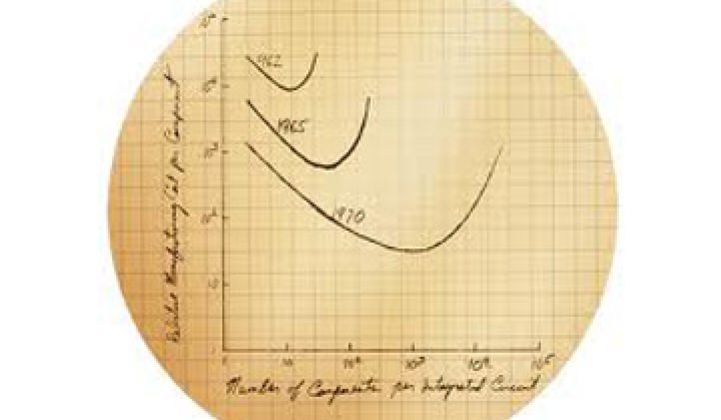San Francisco -- Crystal Solar says thin is the way to win in solar.
The startup, a somewhat secretive outfit concocted by alumni from Applied Materials and Intel, has come up with a vapor deposition technique for making incredibly thin crystalline silicon wafers and then turning them into modules. The thinner the wafers, the lower the ultimate cost of the solar panel.
“We should be under 50 cents a watt in cost [for modules] in volume production,” said K.V. Ravi, Crystal Solar’s CTO, during a presentation at Photon International’s solar startup conference taking place in San Francisco this week. “Wafer thickness is just about the most critical concept for PV.”
The company has made wafers measuring 50 microns thick in its labs and hopes to get down to 20 microns. (A human hair is 90 microns thick.)
By contrast, a standard cutting-edge wafer right now is around 160 to 180 microns thick and it will be a struggle to get past 140 microns, according to Peter Fath from Centrotherm, which makes wafer equipment. Monocrystalline modules cost around $1.30 per watt in China and $1.55 per watt in Japan or the U.S. to produce, according to Shyam Mehta, senior solar analyst at GTM Research.
“I am very skeptical about incremental improvements,” in thinning, said Fath. (Fath spoke highly of the wafer technology from MIT's 1366 Technologies -- see next story.)
Ravi, however, adds that the difference in thickness between Crystal’s wafers and everyone else’s is even larger because Crystal Solar doesn’t have to saw wafers off of an ingot. If you add in waste product, a standard wafer is around 300 microns thick, or six times as thick.
Put another way, Crystal Solar says it can produce 1 watt of energy with a gram of solar. Standard modules need six grams. 1366 needs around three grams.
The company also says it won’t sacrifice efficiency. That 50-micron-thick experimental module has a 15 percent efficiency. Later production wafers will top 20 percent. Prototype mass manufacturing should begin in late 2012 or early 2013.
So what is going on? Crystal Solar has invented a chemical deposition process in which chemical vapors are transformed directly into wafer materials. Trichlorosilane and other materials are pumped into the chamber between two substrates. They adhere to substrates and -- presto! -- wafers are made. Vapor to wafer. (Disclosure: that's my slogan. Ravi has more dignity than to rhyme during a presentation.) Precise details about the process were not provided.
In an ordinary situation, ingots of pure silicon are created and then wafers are sliced off like deli meat.
The other major element of the technology is handling the wafer. Some labs have come out with 90-micron-thick wafers, but they crumble. Again, Ravi went mum when it came to details.
Crystal still faces major technological hurdles, but if it can conquer these, the company claims it can produce crystal silicon panels at thin film prices.
“Thin film is the future and always will be,” he joked.
The current plan is to sell modules, but Ravi admitted that the company one day could become an equipment provider. The intellectual property, after all, is bound up in manufacturing process and many say solar is more of a process than a product.



